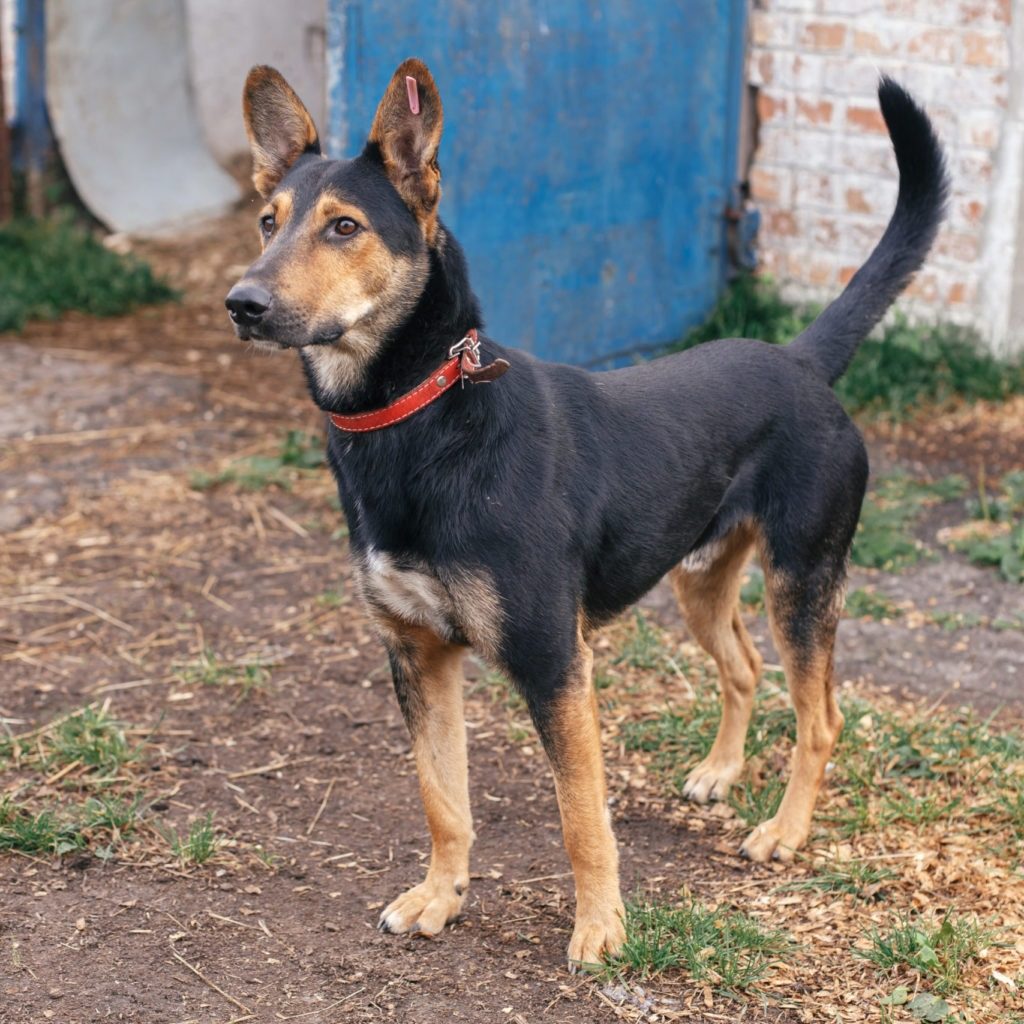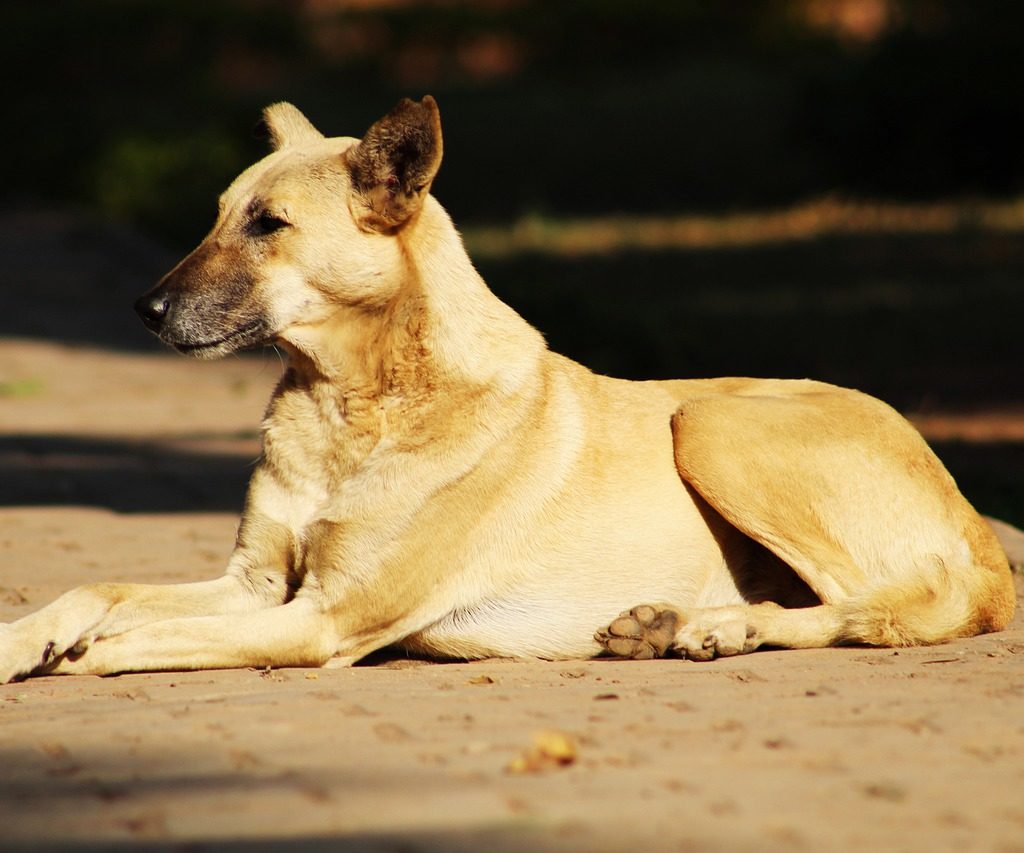Let me walk you through why this particular dog is unique from other breeds.
History
Every dog has a history of evolution. It is not a thing to brag for pedigreed dogs alone. Indian Pariah is one of the few dogs featured in National Geographic Channel’s documentary.
The Indian Pariah dog was originally called as the Indian Pye-Dog. It was native to the Andaman and Nicobar Islands. The dog is also referred to as ”mutt” ”mongrel,” or ”stray.” It is one of the first breeds of domesticated dogs native to the Indian subcontinent, Pakistan, and Bangladesh.
They are similar to other native breeds such as African Basenji, Australian Dingo, and Israeli Cannan. It is believed that most of the pedigreed dogs are a result of selective breeding in Indian Pariah; take a bow!
These dogs are subjected to neglect and abuse in India by the British Colonists because they wanted to commercialize their imported breeds. Canine enthusiasts stereotyped the foreign breeds, and it has multiplied exponentially throughout India.
Almost all Indians look down these dogs and have favoritism towards foreign breeds. A predominant stigma among Indians is that if a person owns the Indian Pariah, they are discriminated against, like racism.
People who own a pedigreed dog are the supreme, and out of the box shows a kind of racist slur towards Pariahs and their owners. My friend wrote a plea to the famous dog food manufacturing company about why they don’t have Pariah specific food when they have so many for pedigreed dogs. They just replied, ”What breed is your pet?”. Where does this discrimination come from? From us, mostly Indians.

Because of their constant neglect, most of the dogs were left on the streets and survived on their own. Since they thrived naturally, they evolved into a hardy canine. It is because of this very reason, they multiplied without control, and stand as a false symbol of menace to the society.
It’s no surprise that people provoke these dogs and victimize themselves. Because of their huge numbers and increased provocation by humans, the number of Pariah related bites and deaths are increasing every year.
A proper population control standard is yet to be formulated by the Indian government. The rapid urbanization is polluting the pure bloodline of Indian Pariahs. Uncontrolled interbreeding is increasing the birth of new breeds.
Thanks to multiple NGOs such as Animal Aid Unlimited, who provide shelter and take care of malnourished or injured Pariahs and other animals.
It is a pity that many do not recognize the Indian Pariah as a breed but address them as strays. Since they were portrayed as strays, no major kernel has recognized Pariah as a breed. Another reason for not recognizing the dog as a breed is a wide variation in their physical characteristics. Because they evolved naturally and adapted themselves to different climatic conditions, the physical characteristics are not generalized or standard.
To preserve the Indian native dog, the Kennel Club of India published a breed standard. Now, the Indian Pariah dog is recognized by the Primitive and Aboriginal Dog Society (PADS). Their popularity has increased multi-fold in recent years, and they are exported to foreign countries.
Description
The Indian Pariah is a medium-sized dog with a short double coat. There’s a coarse upper coat above soft undercoat. The most common color of this dog is fawn and pied. A purebred Pariah rarely has a solid black coat. Dalmatian like the coat is not a result of a pure bloodline.
Pariah’s tail is firmly curved and may have white markings on the tip. These white markings are also seen on the limbs.
The muzzle of the Pariah is longer than the head. It is medium-sized head along with the nose gives a wedge-shaped appearance. The nose is dark or black in fawn color Pariahs.
Eyes are almond-shaped and are dark brown. The ears are pointed with a broad base set low on the head.
Male Pariahs measure 20 to 25 inches high and weigh 44 to 66 pounds. Females are 18 to 23 inches tall and weigh 33 to 55 pounds. Often regarded as one of the strongest bites in domestic dogs, Pariah has a powerful jaw with German Shepherd like scissor bite.
Temperament

The Indian Pariahs are very intelligent and social creatures. They are usually docile, but they aggressively defend their territory. These dogs are excellent guard dogs but can also be good companion pets.
Owing to their lineage, they are familiar with humans and social behavior. Moderate socialization is enough to prevent aggression. They are also used for herding the sheep or other domestic cattle. Some local tribes in India use these dogs for hunting because they have a high prey drive. (NOTE: Hunting is illegal in India).
Pariahs are alert and very attentive to their owners. They are easily trainable and are loyal to their packs. It is no exaggeration to say that my first Indie understood every word we spoke.
Most Pariahs that are not adopted, live as commensals in the neighborhood. They are neither adopted nor rejected but are well fed by everyone. Because of this social bond, they form great watchdogs of your neighborhood.
The Indian Pariahs evolved naturally, and hence they adapt to any climatic condition. They thrive well in all tropical and sub-tropic countries. Walking several times a day and exercise is a must to prevent stress. They adapt to all places and hence live comfortably in apartments.
The major challenge with Pariahs is their art of escaping. There is no dog above Pariah that has the true art of escapism. Another issue is their constant barking even to the slightest sound. Early sensitization to different environments will prevent the noisy nature of the Pariahs.
Since they are pack animals, they do well with other dogs. They are also suitable for homes with children.
Health and Lifespan
These sturdy canines naturally evolved, and hence they have little health issues. As they evolved in tropics and sub-tropical parts of South Asia, they do well in these countries. They cannot tolerate extreme cold or sub-zero temperatures.
The Pariah’s double coat does not require daily grooming, and they have a cat-like attitude of cleaning themselves. Shedding is not seasonal, and they usually shed little every day throughout the year. They do not smell or do not have any specific odor, as observed in pedigreed dogs.
The most common health issue of Indian Pariahs is the Demodicosis or domestic mange. It is seen in dogs that live in poor environments and that are malnourished.
Death in Indian Pariah dog is not due to any disease but due to physical injuries. Accidents on roads, railway tracks, and eating polluted or poisoned food are common causes of death. Another common cause of death is the physical abuse by humans that bothers me a lot. How can humans be so cruel to these adorable angels!
Genetic disorders, such as hip dysplasia, seizures, and eye problems, are rare. Without a doubt, the Indies are the healthiest dogs.
Diet
You can feed the Pariahs with the most versatile food. They grow healthy, even on a strict vegetarian diet. But it is advised to mix or change the diet regularly. Do not feed them with junk food, salty and sweet foods.
A balanced diet that includes high protein, calcium, and essential vitamins will suffice. I’ve used to 4 to 6 boiled eggs for breakfast and mixed with different varieties for the rest of the day. Pariahs eat moderately, and obesity is rarely observed.
Unique Pros
Stray, Indie, Mongrel, or whatever you name it, this dog sits atop the throne in versatility, agility, and temperament. As I said earlier, there are several reasons for me to choose the Indian Pariah. They are:
- Hardy, and adaptability in all weather conditions
- Zero or minimal health issues
- A highly intelligent, social, and alert dog
- Great guard dogs and also excellent companions
- Minimal maintenance
- Can thrive and stay healthy on human food
- Easily trainable
- Excellent with other dogs and kids
My Pariah was a sweet angel, and I’ve raised her kids as well. They all were very intelligent and stayed healthy throughout their life. Apart from regular vaccination, I haven’t taken them to the vet ever in their life. No, I am not exaggerating. They did not have any health issues, and they lived their lives to the fullest; mother crossed the rainbow bridge at the age of 14 while kids between 14 to 16 years of age.
All the dogs were excellent guard dogs of our house as well as neighboring houses. They never let in any stranger, and they quickly got familiarized with people who regularly walk/drive in our neighborhood. And, I never trained them a single thing, not even to sit or fetch. They naturally learned all the commands and became innate family members.
I can’t see a single flaw in these sturdy dogs, and it is overwhelmingly sad for me to see Indies being discriminated against. I would suggest you get an Indian Pariah dog vs the rest of the dogs because of their exceptional qualities and erase the social stigma against these beautiful angels.
I now have an Indie mix, and we are allowed to have only one dog in our apartment. But yes, I feed all the strays that live in our locality every week. My dog always loves to play with them, so do they. Every time I walk my boy out, all these dogs cannot control their anxiety, and yet, they do not jump on my dog or me. Because they know their boundaries, and no one trained them for that.
Have You Decided?
If you ask me to select a dog between an Indian Pariah vs German Shepherd, or Indian Pariah vs Labrador or any other dog breed, I would definitely go with the Indie without a second thought. Do you echo with me?
Have you decided to get one? If yes, please let us know the major reasons for you to adopt an Indian Pariah. We would love to hear your story.

Lydia King is a huge animal lover and has always been fascinated with learning about the animal kingdom. She enjoys writing about anything animal related from scientific information about rare species to animal references in pop culture.












